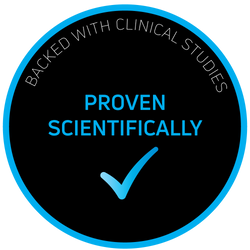Medial epicondylitis, also known as golfer’s elbow, is a painful condition affecting the inner part of the elbow. Although less common than its counterpart, lateral epicondylitis (tennis elbow), it can be just as debilitating for those who suffer from it.
In this article, we will explore this condition in detail, covering its causes, symptoms, and the various treatment options available.
What is Medial epicondylitis?
Medial epicondylitis, or golfer’s elbow, is an inflammation of the tendons that attach to the medial epicondyle, a bony prominence on the inner side of the elbow. This condition mainly affects the flexor and pronator muscles of the forearm, which are responsible for wrist flexion and inward rotation of the hand.
Despite its name, golfer’s elbow does not only affect golfers. It can impact anyone who repeatedly or excessively uses these muscles, whether through sports, work, or daily activities.
Causes and Risk Factors
Several factors can contribute to the development of medial epicondylitis:
- Repetitive Movements: Frequent repetition of motions involving the forearm flexors and pronators is the primary cause.
- Mechanical Overload: Sudden or excessive strain on the tendons can cause micro-tears and inflammation.
- Age: People over 40 are more susceptible due to decreased tendon elasticity.
- Sports Activities: Sports like golf, tennis, javelin throwing, and weightlifting can increase risk.
- Occupational Activities: Jobs requiring repetitive wrist and forearm movements (plumbers, painters, butchers, etc.) are particularly at risk.
- Muscle Weakness: Weak forearm muscles can increase tendon tension, favouring the condition’s onset.
Symptoms of Golfer’s Elbow
The main symptoms include:
- Localised pain on the inner elbow, sometimes radiating down the forearm.
- Increased tenderness to touch over the medial epicondyle.
- Pain worsened by specific movements, especially wrist flexion against resistance or forearm pronation.
- Decreased grip strength, making it difficult to hold objects.
- Occasional mild swelling near the painful area.
Symptom intensity varies between individuals and can become chronic and disabling, significantly affecting quality of life.
How is it Diagnosed?
Diagnosis mainly relies on a clinical exam by a healthcare professional, who will:
- Ask about medical history, work, sports activities, and pain onset.
- Palpate the painful area to pinpoint pain and check for swelling.
- Perform provocation tests by having the patient do resisted wrist flexion or forearm pronation.
- Assess muscle strength and range of motion of the elbow and wrist.
Usually, this clinical evaluation suffices. However, additional tests may be ordered to confirm diagnosis or rule out other issues:
- X-rays: To exclude bone or joint lesions.
- Ultrasound: To detect tendon abnormalities (thickening, calcifications).
- MRI: Useful for diagnostic uncertainty or to assess tendon damage extent.

Best Treatment Options
The goal is to relieve pain, promote tendon healing, and prevent recurrence, through several complementary approaches:
1. Conservative Treatment
Most cases begin with conservative care:
- Rest and activity modification to limit painful movements.
- Application of ice to reduce inflammation and pain.
- Nonsteroidal anti-inflammatory drugs (NSAIDs) as prescribed.
- Wearing a brace or strap to limit painful motion and reduce tendon stress.
2. Physical Therapy
Rehabilitation is crucial:
- Stretching and strengthening exercises to improve flexibility and muscle strength.
- Deep transverse massage to loosen tissues and promote healing.
- Eccentric exercises, which have proven effective in treating tendinopathies.
3. Other Therapeutic Approaches
If conservative treatment fails:
- Corticosteroid injections for rapid pain relief, used cautiously due to risk of tendon weakening.
- Shockwave therapy, which uses high-energy acoustic waves to stimulate tendon healing.
- Platelet-Rich Plasma (PRP) injections to encourage tissue regeneration.
4. Electrotherapy
Electrostimulation is a valuable adjunct treatment. This non-invasive technique uses electrical impulses to stimulate muscles and nerves, improving blood flow, reducing pain, and speeding recovery.

Many patients and healthcare professionals report positive results with regular electrotherapy, especially as part of a comprehensive rehabilitation program. Initially, a TENS program may be used to manage pain.
5. Surgery
Surgery is a last resort after several months of failed conservative treatment. It usually involves partially releasing the affected tendons to relieve tension.
Prevention Tips
To prevent onset or recurrence:
- Warm up muscles properly before intense activity.
- Use ergonomic equipment and adjust handle sizes of racquets or golf clubs.
- Vary activities to avoid repetitive motions.
- Regularly strengthen forearm muscles.
- Maintain good posture at work and take frequent breaks.
- Consult a healthcare professional promptly at the first sign of symptoms.
Summary
Medial epicondylitis (golfer’s elbow) can be disabling, but many treatment options exist. Early and appropriate care usually leads to good outcomes. Professional diagnosis and personalized treatment are essential. Prevention through adapted movements and muscle strengthening plays a major role in long-term management.
By following preventive advice and adopting suitable therapies, most patients can expect significant symptom improvement and a return to regular activities. Don’t hesitate to consult a doctor or physical therapist specialised in this condition for optimal care.


